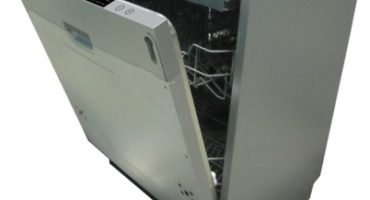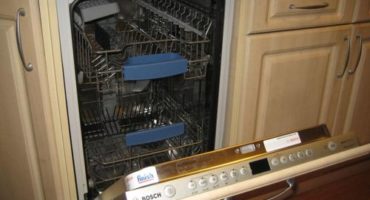- Do-it-yourself dishwasher diagnostics
- Types of malfunctions and quick fixes
- The dishwasher is not functioning, no indication
- No water in the dishwasher
- Nothing happens after turning on the machine and supplying water.
- There is no normal discharge of water
- Violation of the integrity of the sealing joints
- Increased noise during operation
- Water does not heat up during dishwasher operation
- After washing, the dishes remain wet
- Tool kit for repairing dishwashers
- Some useful repair and diagnostic tips
Users do not always have the opportunity to return a failed household appliance to an expensive service center or call a wizard at home. Therefore, many owners of such equipment prefer to start troubleshooting on their own. This action is especially relevant if the cause of the breakdown is identified and it is only necessary to replace the broken item.
Such a variety of household appliances as dishwashers, requires not only the correct connection to the industrial network, but also the appropriate settings. How to properly disassemble the dishwasher, as well as identify and fix the malfunction yourself? The answers to these questions are presented later in the article.
Do-it-yourself dishwasher diagnostics
Before proceeding with the repair of the dishwasher with your own hands, you need to find a malfunction. And the machine itself can help in this, because modern devices have a special algorithm that, in the event of a breakdown, conducts a self-diagnosis and presents the user with a malfunction in the form of a digital code.
This code will be displayed on the display by a household appliance, and on older models, an error is displayed in a certain operation of the alarm LEDs. Well-known manufacturers of household appliances, such as Zanussi and Electrolux, made the self-diagnosis process automatic - the dishwasher detects a malfunction and displays a code. In models of other companies, the definition of breakdown begins after the introduction of a certain key combination. The correct sequence information can be found in the instruction manual.
Various error codes using Indesit's dishwasher as an example:
- E1 - indicates the absence of heating of the liquid. The problem is related to the malfunction of the heater, thermostat or control module.
- E2 - malfunction of the pressure switch. The pressure switch is a sensor that provides the user with accurate information about the presence of water in the tank and its amount.
- E5 - the water level exceeds the norm.
- E6 - Aqua Sensor does not work. This device determines the degree of water pollution. It works during the last rinse of things.
- E9 is the most common error that signals about malfunction and replacement of the heating element.
- E15 - code signaling as AquaStop triggering, and about the breakdown of this function.
- E17 - lack of water in the dishwasher.
- E21 - there is no normal fluid circulation, the cause is a pump malfunction.
- E27 - the voltage of the industrial network does not correspond to the norm.
Types of malfunctions and quick fixes
The dishwasher belongs to the class of complex household appliances, since its work is done using automation, the algorithm of which is stored in special modules. But even such devices have a number of constant errors that many users managed to get to know. To solve such problems, it is enough to have a minimum number of tools and know where and how to climb.
The dishwasher is not functioning, no indication
The problem is simple, but may have several reasons. The most common is the lack of voltage in the outlet (electricity was cut off throughout the house). If so, then it remains only to wait. But if there is a required potential difference in the socket (within 210-230 V), then it is necessary to disassemble the dishwasher and look for a problem.
Most dishwasher models are equipped with a junction box - the place where the power cable comes in. It is from here that electricity is supplied to all power nodes of the household appliance. Using a Phillips screwdriver, it is necessary to remove the lid and measure (using a multimeter) whether the voltage comes into the box.
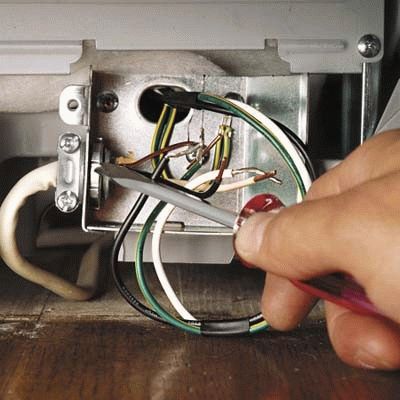
If there is no potential difference, you should “ring” the wire. For this, a multimeter is also used, which is transferred to the corresponding mode. The cable must be disconnected from the network, the probes must touch one and the second end of the wire. If the conductor is intact, then the multimeter will emit a corresponding sound signal.
If the cable is intact and all its conductors ring well, then you can try to find a malfunction in the further in the electric circuit of the dishwasher. To do this without a circuit diagram for the device is quite problematic. It is also necessary to possess the basics of electrical engineering, since reading circuits requires appropriate knowledge.
No water in the dishwasher
A common problem that has several explanations:
- The water tap is closed. Many users forget about this feature of the operation of a household appliance and can even call specialists without realizing immediately look at the position of the crane.
- Failed or just clogged filter element. The filter, especially with the process water currently used, has a short life and should be cleaned often (for example, from Beko). You can wash the mesh under a dense stream of water, you do not need to use special cleaners for a great price.
- The water supply valve does not work. A problem that requires partial disassembly of the dishwasher. To get to the valve, disconnect the bottom panel of the device, where it will be located next to the filter element. The valve consists of several inductors, which must be “phoned” with a multimeter. The findings of the coils are disconnected and probes are applied to them. Sound signal means interturn short circuit. The reason for the absence of any resistance is an open circuit. Both the first and second reasons require valve replacement.
When buying a valve or filter, you should choose exactly such a part. This is due to the fact that various manufacturers of household appliances make unique spare parts and parts of one model may not be suitable for another.
Nothing happens after turning on the machine and supplying water.
Here you must trust your ears. There are two reasons for the malfunction - the electric motor or pump does not work. If the engine emits a uniform and constant hum, then there is the possibility of a wedge of the stator and rotor. Disassemble the dishwasher and look for the problem.
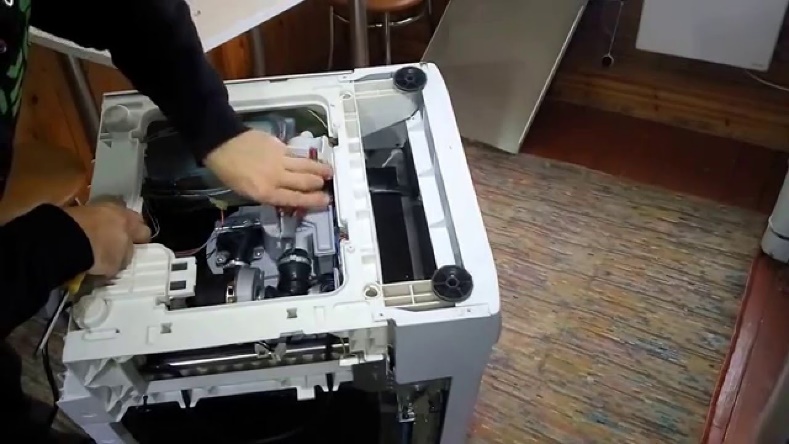
There is also the possibility of blocking the pump. To unlock it on the network, special videos with the exact sequence of actions are provided.
If the process of unlocking the pump is quite simple, then the diagnosis of an electric motor requires knowledge of electrical engineering and the presence of a multimeter. The first step is to “ring” the stator winding (fixed part of the motor) for an interturn short circuit. The motor leads must be disconnected and pushed apart. It is necessary to fix probes on conclusions. If two windings call each other, this means an inter-turn short circuit, the electric motor will not work.
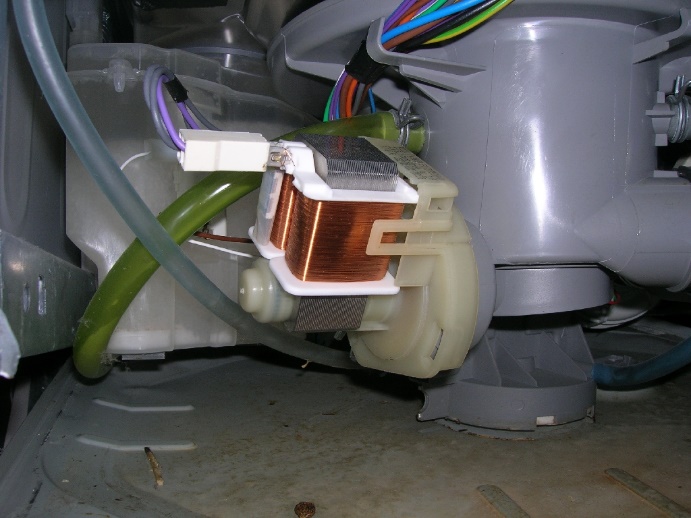
Possible closure of the rotor (moving part of the electric motor) or open circuit of the winding. A break can occur both in the rotor and in the stator.If all of the above faults are detected, the motor should be replaced. In order to save money, the affected part of the engine can be given to a master who is able to wind a new winding. The cost of this service is much less than the purchase of a new mechanism.
There is no normal discharge of water

The first thing you should take a look at the condition of the sewer (how long it was repaired), a frequent reason for the lack of discharge is clogged drain. To normalize the operation of the dishwasher, it should be cleaned qualitatively. It is best to use a special brush-brush on a long metal cable.
Another cause of the malfunction is the drain pump. Its clogging occurs as often as the filter element. Therefore, to clean the drain pump, it must be removed and disassembled. Small and large particles of debris are removed by using running water under slight pressure.
The pump is also an electric motor. What malfunctions can occur in this mechanism and how to diagnose it is described above. If any of the windings burns out or the wire is broken, the pump should be replaced with a new one.
Violation of the integrity of the sealing joints
It’s easier to express yourself - the rubber gasket burst. Often this happens with the main o-ring located on the inside of the door. Defining a violation of its integrity is quite simple - the damage is clearly visible even with the naked eye. Replace door seal It should be as soon as possible, otherwise there will always be water under the dishwasher.
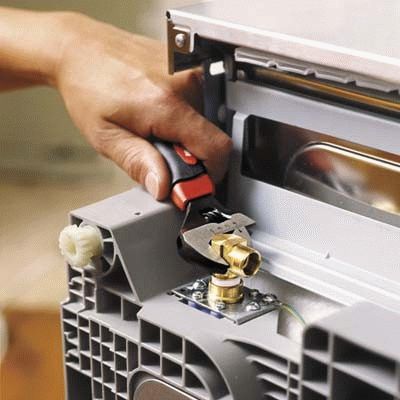
It’s harder to deal with such a problem as fluid from the bottom of the dishwasher. Then it is necessary to dismantle the bottom cover of the device and conduct a visual inspection of the pump sealing joints, nozzles installed to water hosesas well as the tightness of the drainage system. If a crack or abrasion occurs, the damaged seal must be replaced. For greater convenience, you can purchase a repair kit for a specific part.
Increased noise during operation
The reasons can be in two elements: the engine or the pump, or rather the bearings installed in them. Upon exiting the troya of the bearing, it begins to make a characteristic whistling sound, loud bangs can be heard. To replace the bearings, a press may be required, so it is best to return the damaged element to the workshop.
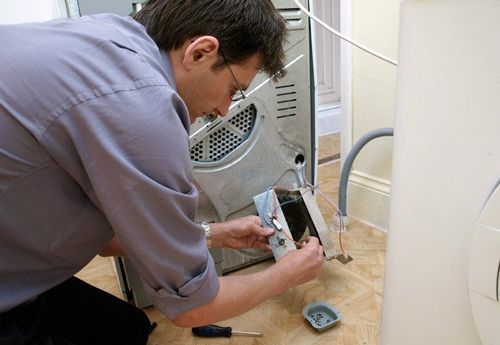
Also increased noise during dishwasher operation it produces a damaged pump impeller or the presence of glass fragments or metal chips in the system. Identifying such garbage is problematic, as it is too small. For cleaning the internal surfaces usually use compressed air or a simple cleaning brush.
Water does not heat up during dishwasher operation
The cause of this malfunction will be constantly dirty dishes. Before and after washing, its appearance will not change.
What could be the reasons:
- Failure of the heating element. Increased rigidity and an excessive amount of salts lead to a low operational life of the heating element, which can be checked with a multimeter. It is necessary to disconnect the heater from the wires and unscrew its fastening to the body. It is necessary to attach the probes of the multimeter to its conclusions, and check the element for resistance. If a break is shown, the heating element must be replaced with a new one.
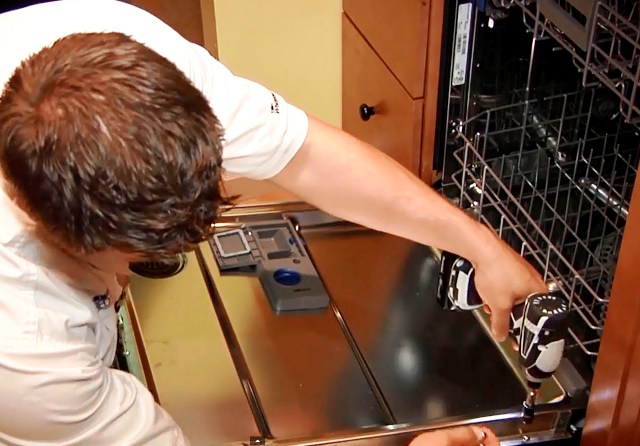
- Failure of the temperature sensor. It can only be checked at a service center. There may also be problems with the replacement, since this element is installed in a hard-to-reach place and requires a certain connection.
- Failure of the timer. To check it, you need a circuit diagram of the product. Only there you can calculate the algorithm by which the heating element is turned on.Therefore, to save personal time, it is better to take the timer to a repair shop or simply replace it with a new one.
After washing, the dishes remain wet
Drying does not work, which is carried out by turning on the fan. If it does not work, then the dishes remain wet. You can check the fan, as well as the engine with the pump, using a multimeter. If he is a worker, then voltage may simply not come to him due to an open circuit. To solve the problem, a circuit diagram is required.
Tool kit for repairing dishwashers
Before proceeding with the repair of the dishwasher, you should know for sure that all the necessary tools are at hand. It is very inconvenient to constantly be distracted and run to the hardware store for a washer, nut, bolt or electrical tape.
A sample list of the required tool:
- A set of flat and curly screwdrivers. They take first place as necessary, as they are a practically universal tool.
- Set of wrenches. It is most convenient to use a special knob with a set of heads, but for household appliances, open-end wrenches are also suitable.
- Multimeter. A measuring device that is always useful in the household, especially in the field of electrical.
- Construction knife with a set of interchangeable blades.
- Insulating tape or heat shrink tubes of various diameters.
- Lamp. An ordinary flashlight is suitable, since the room does not always have good quality lighting.
- The instruction manual or the electrical diagram of the model of the dishwasher that needs repair.
Some useful repair and diagnostic tips
By some obvious signs, you can determine the area of the dishwasher that you need to deal with. If you carefully monitor the operation of the household appliance, then you can warn of malfunctions. It is enough to carry out timely maintenance and correct even the smallest operational errors, as small breakdowns become a springboard for major malfunctions.
- To the dishwasher worked properly, over a long period of time, special attention should be paid to filters. Once every few months, the filter element should be cleaned, and if it malfunctions, immediately replace it.
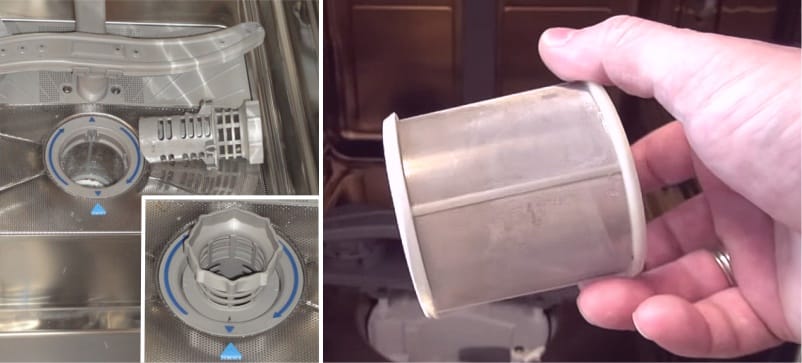
- Do not load a large amount of rinse aid. This affects both the operation of the machine and the quality of the wash - stains remain on the dishes. To comply with the norm, it is enough to look at the operating instructions for the dishwasher, and always use a measuring cup.
- All defective items must be replaced immediately. This also applies to electric motor bearings. A bearing that makes noise during operation of the device may last for some more time, but this may adversely affect the operation of the entire device as a whole.
- In order for dishes to be cleaned cleanly and efficiently of food debris, they must be properly placed in the dishwasher. If the plates are placed one on one, then the bottom row will be worse washed than the top.
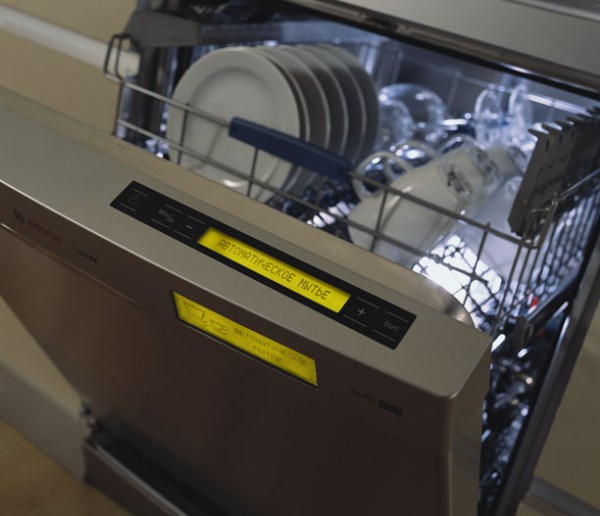
- For the dishwasher, in the general electrical panel, a separate circuit breaker is installed (to prevent the effects of a short circuit), as well as an RCD (for the safety of users).
- Rubber seals and components of the dishwasher mechanisms have a short service life. Therefore, during inspections, special attention should be paid to them.
If you follow the above recommendations and have a reliable tool at hand, then repairing any dishwasher with your own hands will turn into a fascinating and simple task.

